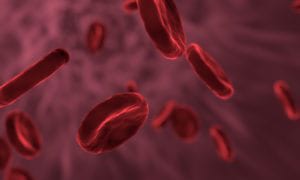Thrombocytopenia
What is thrombocytopenia?
Thrombocytopenia is a condition in which an individual does not have enough platelets. Platelets are blood cells that stop bleeding by clumping together to form clots. A normal platelet level is between 150,000 to 400,000 per microliter of blood, but if a person’s platelet level falls below 150,000, then they have thrombocytopenia.What are the symptoms of thrombocytopenia?
The symptoms of thrombocytopenia vary in severity and are directly related to how low the patient’s platelet level is. Symptoms include:- Easy and excessive bleeding
- Bleeding under the skin that causes flat red spots, known as petechiae. This symptom is most common in legs and feet
- Prolonged bleeding from cuts
- Bleeding from gums and/or nose
- Blood in urine or stool
- Unusually heavy menstrual bleeding
- Fatigue
- Enlarged spleen
- Jaundice
What causes thrombocytopenia?
There are many potential causes of thrombocytopenia. This condition can be inherited or caused by a number of medical conditions. Whatever the underlying cause is, it affects the amount of circulating platelets in the blood stream. Examples of causes include:- Decreased platelet production by the bone marrow. The decrease in production can be caused by leukemia, anemia, viral infections such as HIV and Hepatitis C, chemotherapy, toxic chemical exposure, or excessive alcohol consumption.
- Trapped platelets by a damaged spleen. The spleen is responsible for fighting infections and riding the body of waste. An enlarged spleen traps the platelets and decreases the levels in the blood stream.
- Increased platelet destruction. This can be caused by pregnancy, autoimmune disease, severe bacterial infections, passing of platelets through man-made heart valves, hemolytic syndrome, or certain medications. Medications such as Heparin, Quinine, sulfa drugs, and seizure medications can lower platelet levels and affect their effectiveness.
What are the treatment options for thrombocytopenia?
Treatment options for thrombocytopenia depend on the cause and severity of the condition. Treatment is required when the platelet level is low enough to cause dangerous, and sometimes fatal, bleeding, especially if it occurs in the brain. Examples of treatments include:- Administration of Prednisone in an attempt to raise platelet levels by treating autoimmune problems
- Treatment of underlying medical cause, such as changing the medication that is leading to low platelet count
- Surgery to remove the spleen or correct heart valve problems
- Blood or platelet transfusions
- Administration of a medication called Rituximab (Rituxan). This medication helps control a specific type of white blood cell that attacks and destroys platelets
- Intravenous immune globulin infusions for those that cannot tolerate oral steroids, or if rapid raising of platelet levels is needed
Where can I find more information about thrombocytopenia?
Thrombocytopenia Articles

The Ketogenic Diet May Have Benefits During Chemotherapy
Rose Duesterwald
December 29, 2022
Read More »

FDA and EMA Explore Blood Clot Potential in J&J COVID-19 Vaccine
Jessica Lynn
April 13, 2021
Read More »


First Participant Dosed in Phase 1/2 RLYB211 Trial for FNAIT
Jessica Lynn
November 12, 2020
Read More »

New Investigative Therapy for Myelofibrosis Patients with Severe Thrombocytopenia is Making Headway
Trudy Horsting
October 6, 2020
Read More »

Study: Felty’s Syndrome Presents Differently in Pediatric Patients
James Moore
April 14, 2020
Read More »

Rivaroxaban Lowers Risk of Venous Thromboembolism for Orthopedic Surgeries as Compared to Heparin
Jessica Lynn
April 13, 2020
Read More »

New FDA Approved Therapy for Chronic Immune Thrombocytopenia Should Hit Markets This Month
Trudy Horsting
July 5, 2019
Read More »




